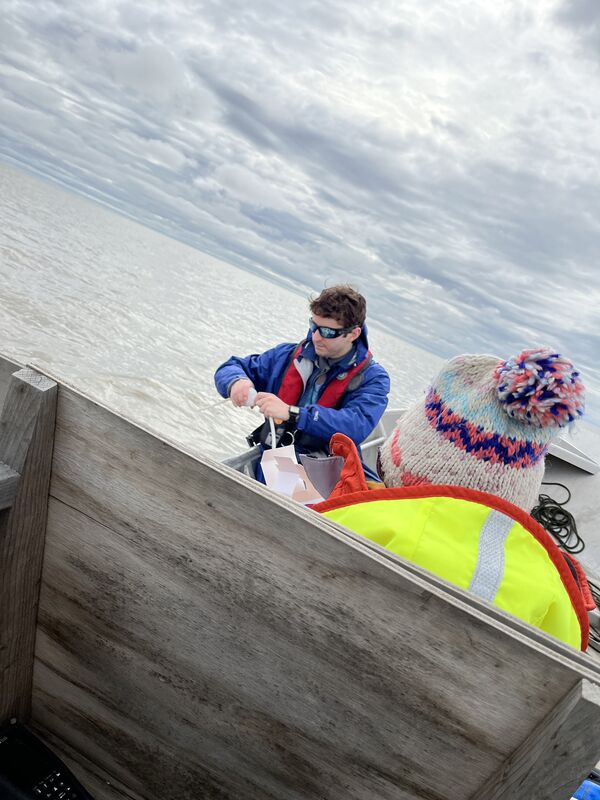|
By Alyssa Burns Photo credit: Alexis Slentz, Alyssa Burns, and Anne Kellerman
We all quickly packed up our gear, got dressed, and loaded up on Sony’s boat toward the Bering Sea. We headed out the Alakanuk Channel with our second (safety) boat and driver, John Strongheart (whom we started working with during the early August sampling trip). Once in the Bering Sea, we were able to get to 5 ppt without issue, but then encountered a minor snag. We were unable to move in any direction (to potentially higher salinity) due to shallow waters and breakers (large waves crashing on sandbars) but hoped that a shift in tides might bring higher salinity water. So, we made use of the beautiful weather and waited. With time, we found that the tide was coming in and bringing a change in water color and salinity, which allowed us to sample at 10 and 12 ppt – THE top priority of the trip. On the following two days, we were less fortunate with the weather conditions. The second day we were unable to do any boat sampling but managed to go to some local sites the following day. That day we also brought along Theo Hamilton, an Alakanuk-based intern who helped with our daily/weekly sampling throughout the summer. We revisited the Alakanuk and Emo Channels, which we sampled in early August, and started sampling terrestrial sites that may be contributing to the organic carbon found in the Yukon River delta. We decided that grass/shrub-dominated floodplains, forested islands, and tundra sites may be most prevalent in the delta and sampled plants, soils, groundwater, and surface water across each of those landscapes. We all found the terrestrial sampling to be exciting and different, with a few profound testimonials:
- John: “I knew you all cared about the water, but I didn’t know you cared about the plants and soils too.” - Theo: “You can eat these plants in the spring… These are apparently poisonous.” - Alexis: “Seeing permafrost was my favorite part.” - Harrison: “That stuff was so cool. My mom’s going to be so excited to hear that I was collecting plants.” On the last sampling day, we went with Sony up the North Mouth run (the longest run in the delta) to perform some optical measurements that we were unable to capture during the early August trip. Along with collecting some valuable samples and data, we were able to spot some moose cows and calves! We are hopeful that everything we’ve been able to accomplish this season (especially our early and late August delta-wide sampling) will be the icing on top of the incredible sample set we’ve obtained throughout the 2022 spring-summer seasons. And I can’t speak for everyone, but I’m excited to start analyzing samples to see what we’ve been able to learn based on the hard work done by our team and collaborators. Overall, I think this was the perfect cap for the 2022 field season. Until next time, Alakanuk. - Alyssa Burns
0 Comments
Leave a Reply. |
Archives
July 2023
CategoriesHeader Photo Credit:
Maria Tzortziou |










 RSS Feed
RSS Feed